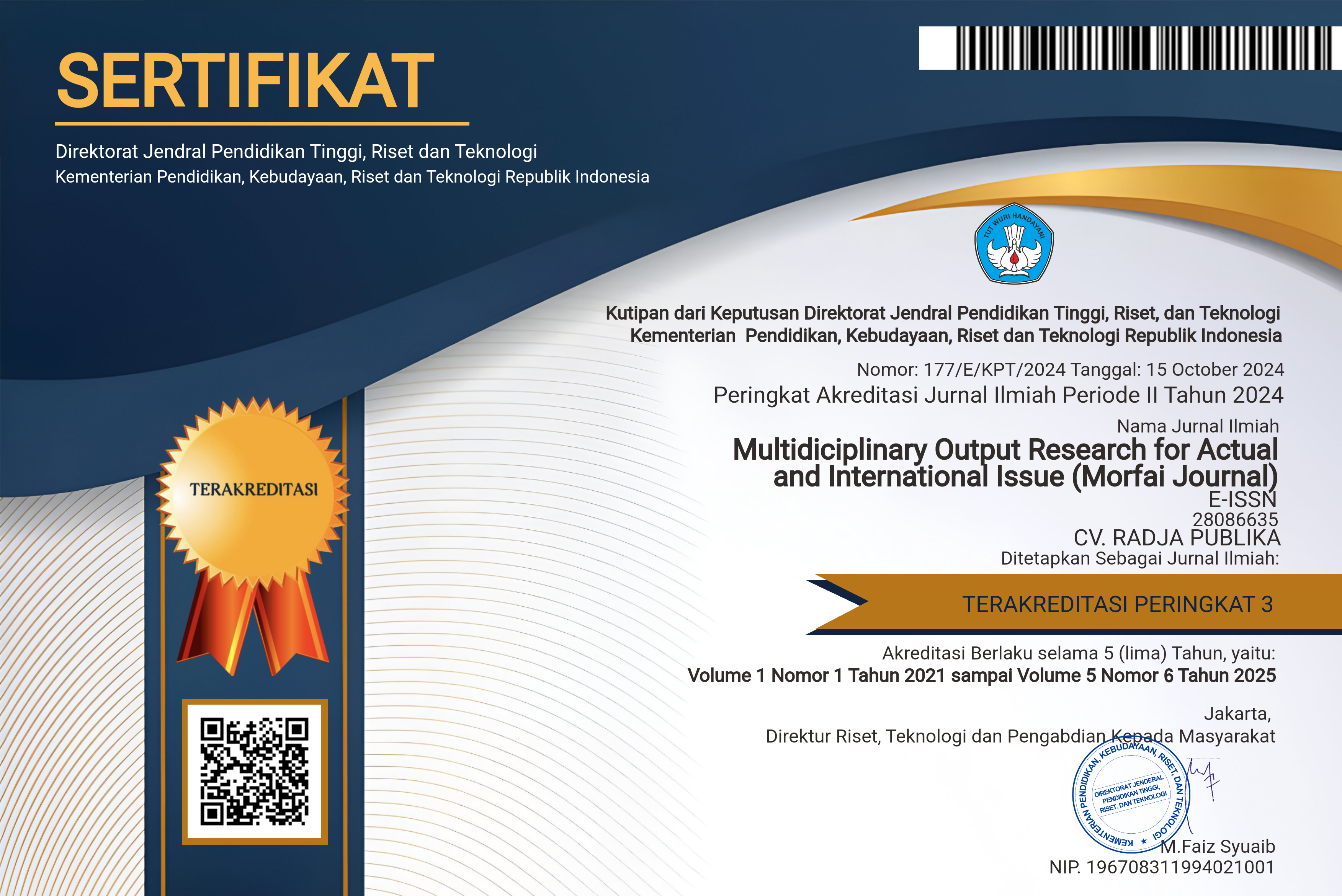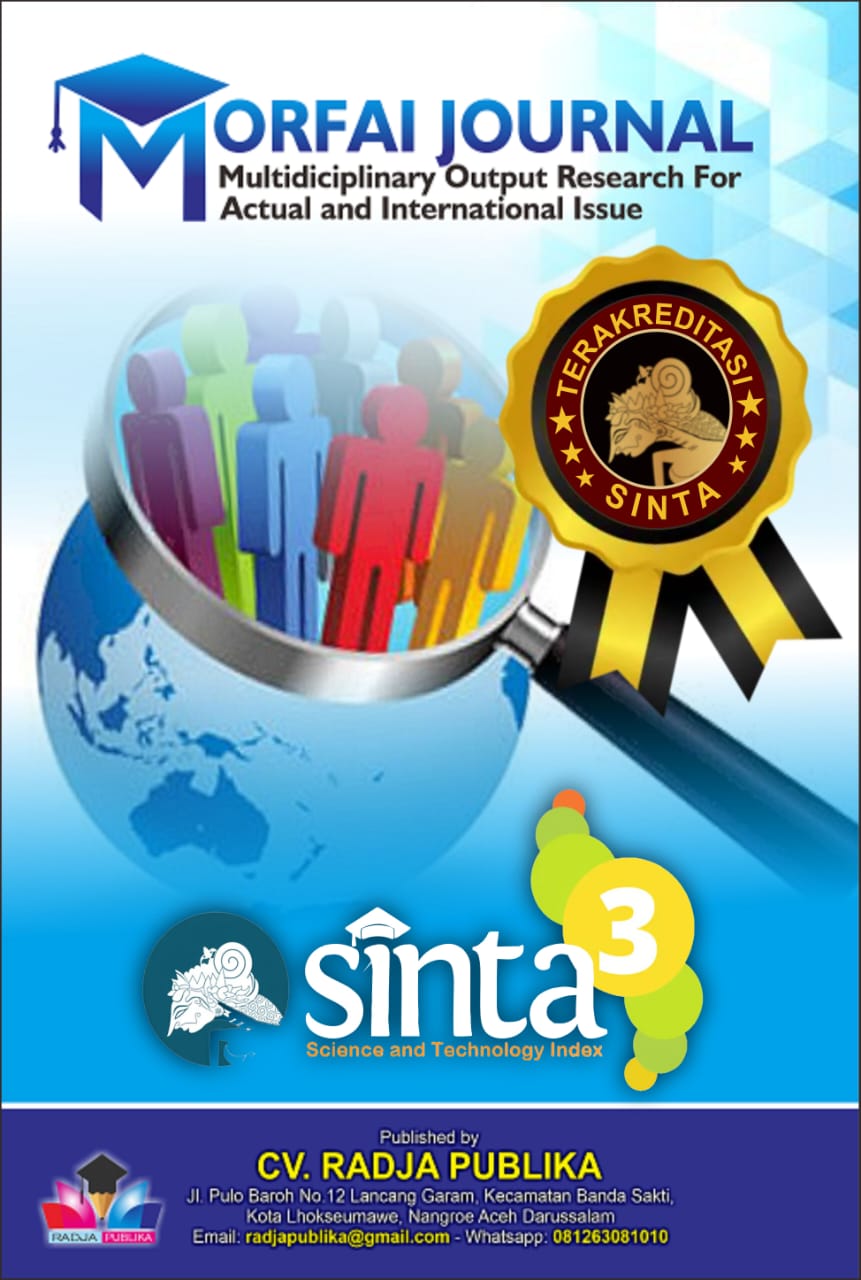TRIPLE BOTTOM LINE APPROACH FOR EVALUATING EFFICIENCY AND RESILIENCE OF NATIVE CHICKEN FARMING: CASE STUDY IN MEDAN CITY
Main Article Content
Tampe Tuah Malem Ginting
Arief Muhazir Insandi
Surya Sevi Wijayana Lumban Tobing
This study applies the Triple Bottom Line (TBL) framework to comprehensively evaluate the efficiency and resilience of native chicken farming enterprises in Medan City, Indonesia. The research employed a mixed-methods approach by combining quantitative and qualitative data. Primary data were obtained from 30 farmers through structured surveys and in-depth interviews, while secondary information was collected from official reports and relevant literature. Economic efficiency was measured using Stochastic Frontier Analysis (SFA), and social as well as environmental dimensions were assessed through descriptive and qualitative analysis. The findings reveal that the average technical efficiency (TE) of the farmers is 0.72, allocative efficiency (AE) is 0.68, and economic efficiency (EE) is 0.65, indicating that nearly 75% of the sampled farmers remain economically inefficient. Socially, native chicken farming contributes to household income diversification, employment opportunities, and local food security, but constraints persist in the areas of farmer capacity development, access to markets, and institutional support. Environmentally, waste management practices are still limited, with inadequate utilization of by-products, potentially threatening ecological sustainability in the long run. These results emphasize that strengthening economic efficiency alone is insufficient; it must be aligned with social empowerment and ecological responsibility to enhance overall resilience. The study contributes practical insights for policymakers, farmer associations, and stakeholders in designing targeted interventions to increase competitiveness and long-term sustainability of native chicken farming under dynamic economic conditions.
Basar, R., & others. (2023). Triple Bottom Line in Broiler Farming: Environmental sustainability challenges. Journal of Agricultural Sustainability.
Chapot, L., & others. (2024). Needs and capabilities for improving poultry production in Indonesia. Frontiers in Veterinary Science.
Elkington, J. (2018). 25 Years Ago I Coined the Phrase “Triple Bottom Line.” Here’s Why It’s Time to Rethink It. Harvard Business Review.
Ginting, T. T. M., & Insandi, A. M. (2022). Implementasi Recording Data Produksi Secara Komputerisasi di Peternakan Namorambe. Jurnal Pengabdian Masyarakat Mentari. https://jurnalpengabdianmasyarakatmentari.com/index.php/jpmm/article/view/22
Ginting, T. T. M., & Insandi, A. M. (2023). Analisis Efisiensi Produksi Ayam Kampung di Kota Tebing Tinggi. Jurnal Dinamika Sosial Dan Agrobisnis. https://www.jurnal.unds.ac.id/index.php/dsa/article/view/402
Ginting, T. T. M., Insandi, A. M., & Tobing, S. S. W. L. (2024). Triple Bottom Line Approach for Evaluating Efficiency and Resilience of Native Chicken Farming: Case Study in Medan City. Multidisciplinary Output Research for Actual and International Issue (MORFAI Journal). https://doi.org/10.54443/morfai.v4i3.1898
Latifah, L. (2021). Ecological Indicators in Livestock Sustainability. Journal of Cleaner Production.
Mbazzi, F. B., & others. (2024). Participatory visual narratives in inclusive education. Journal of Participatory Research Methods.
Porter, M. E., & Kramer, M. R. (2019). Creating Shared Value Revisited. Harvard Business School Publishing.
Sumiati, & others. (2025). Constraints to poultry farming sustainability in Indonesia. Animal Bioscience.
Wiranata, A., & others. (2020). Profitability analysis of smallholder poultry farming in Jember. Tropical Animal Health and Production.
Yunus, M., & Moingeon, B. (2019). Social Business and the Future of Capitalism. Springer.
Basar, R., & others. (2023). Triple Bottom Line in Broiler Farming: Environmental sustainability challenges. Journal of Agricultural Sustainability.
Chapot, L., & others. (2024). Needs and capabilities for improving poultry production in Indonesia. Frontiers in Veterinary Science.
Elkington, J. (2018). 25 Years Ago I Coined the Phrase “Triple Bottom Line.” Here’s Why It’s Time to Rethink It. Harvard Business Review.
Ginting, T. T. M., & Insandi, A. M. (2022). Implementasi Recording Data Produksi Secara Komputerisasi di Peternakan Namorambe. Jurnal Pengabdian Masyarakat Mentari. https://jurnalpengabdianmasyarakatmentari.com/index.php/jpmm/article/view/22
Ginting, T. T. M., & Insandi, A. M. (2023). Analisis Efisiensi Produksi Ayam Kampung di Kota Tebing Tinggi. Jurnal Dinamika Sosial Dan Agrobisnis. https://www.jurnal.unds.ac.id/index.php/dsa/article/view/402
Ginting, T. T. M., Insandi, A. M., & Tobing, S. S. W. L. (2024). Triple Bottom Line Approach for Evaluating Efficiency and Resilience of Native Chicken Farming: Case Study in Medan City. Multidisciplinary Output Research for Actual and International Issue (MORFAI Journal). https://doi.org/10.54443/morfai.v4i3.1898
Latifah, L. (2021). Ecological Indicators in Livestock Sustainability. Journal of Cleaner Production.
Mbazzi, F. B., & others. (2024). Participatory visual narratives in inclusive education. Journal of Participatory Research Methods.
Porter, M. E., & Kramer, M. R. (2019). Creating Shared Value Revisited. Harvard Business School Publishing.
Sumiati, & others. (2025). Constraints to poultry farming sustainability in Indonesia. Animal Bioscience.
Wiranata, A., & others. (2020). Profitability analysis of smallholder poultry farming in Jember. Tropical Animal Health and Production.
Yunus, M., & Moingeon, B. (2019). Social Business and the Future of Capitalism. Springer.









